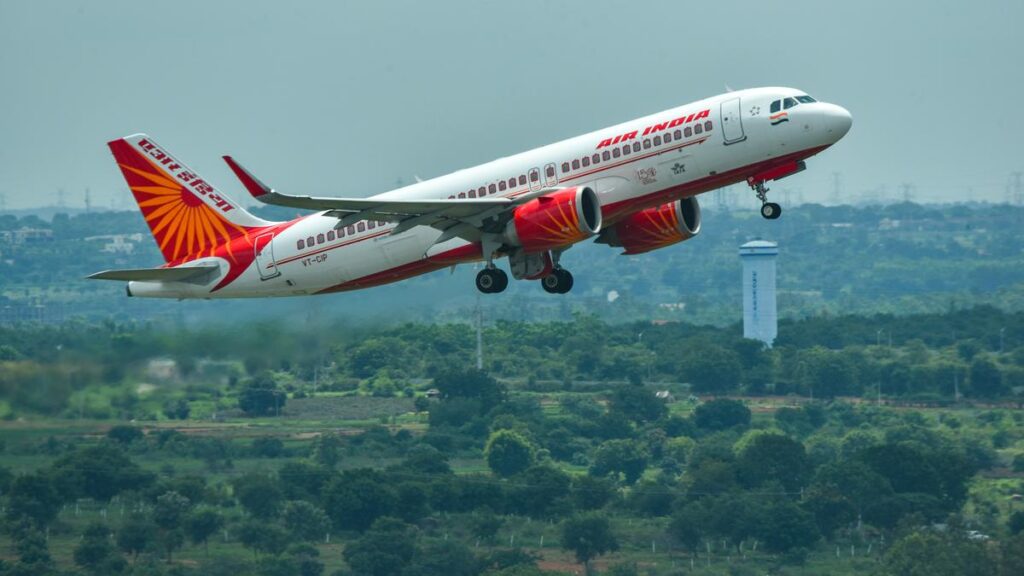Published on: June 22, 2025
By: NEWZ101 Editorial Team
Category: Aviation Technology, Travel News

India’s national carrier, Air India, has announced a temporary reduction in flights operated by narrow-body aircraft across 19 routes, citing fleet optimization and tech-driven scheduling improvements.
As the airline navigates aircraft maintenance cycles, tech upgrades, and route realignments, this strategic move highlights the increasing role of aviation technology and data analytics in decision-making.
Here’s a breakdown of everything you need to know about the change, its impact, and the technology shaping it.
✈️ Why Air India Is Cutting Narrow-Body Flights on 19 Routes
According to official sources, the reduction comes as part of a short-term fleet management strategy, aimed at:
- Increasing efficiency amid ongoing aircraft servicing
- Upgrading older aircraft systems for better fuel optimization
- Minimizing delays and maintenance downtime
The decision primarily affects Airbus A320 family aircraft, which are commonly used for short-haul and domestic routes.
📍 Affected Routes and Sectors
While a full list of affected routes is yet to be released, internal leaks suggest the impact may be seen on popular connections such as:
- Delhi – Jaipur
- Mumbai – Nagpur
- Hyderabad – Kochi
- Bengaluru – Ahmedabad
- Pune – Goa
These routes are typically serviced by narrow-body jets due to shorter flight times and medium capacity demand.
💡 How Technology Is Playing a Role
Air India’s latest operational changes are heavily backed by aviation analytics software and AI-powered forecasting tools. Here’s how tech is enabling smarter fleet decisions:
1. Predictive Maintenance
Using AI-driven diagnostics, Air India can proactively detect wear-and-tear in engines, avionics, and onboard systems—reducing the risk of in-air failures.
2. Route Profitability Algorithms
The airline uses machine learning models to assess which routes are underperforming based on fuel usage, occupancy rate, and ticket pricing trends.
3. Passenger Rebooking Automation
Affected passengers are likely to be rerouted through AI-powered rebooking systems, minimizing manual delays and improving customer experience.
📊 Impact on Passengers
While Air India is assuring minimal disruption, travelers can expect:
- Reduced frequency on some domestic routes
- Flight reassignments or alternative aircraft usage
- Temporary increase in fares on high-demand routes due to fewer available seats
Pro tip: Travelers are encouraged to check real-time flight updates via the Air India mobile app or official website before travel.
🛫 What’s Next for Air India?
This move is part of Air India’s broader tech-driven transformation strategy under the Tata Group, which includes:
- A fleet modernization plan
- Enhanced digital experience for flyers
- Expanded integration of aviation IoT and real-time data platforms
The airline’s use of smart scheduling software, AI chatbots, and blockchain-based maintenance records positions it for a more stable, tech-resilient future.
📌 Conclusion: Short-Term Disruption, Long-Term Efficiency
While the reduction in narrow-body flights may cause temporary inconvenience for some passengers, it signals a positive shift towards smart aviation practices. In a competitive market, leveraging AI and data analytics can help airlines like Air India improve performance, safety, and customer satisfaction.
Stay tuned to NEWZ101 for the latest on aviation technology, airline policy updates, and travel hacks.
Tags: #AirIndia #FlightReductions #NarrowBodyAircraft #AviationTechnology #AIinAviation #TravelNewsIndia #FlightDisruptionAlert #SmartFleetManagement
